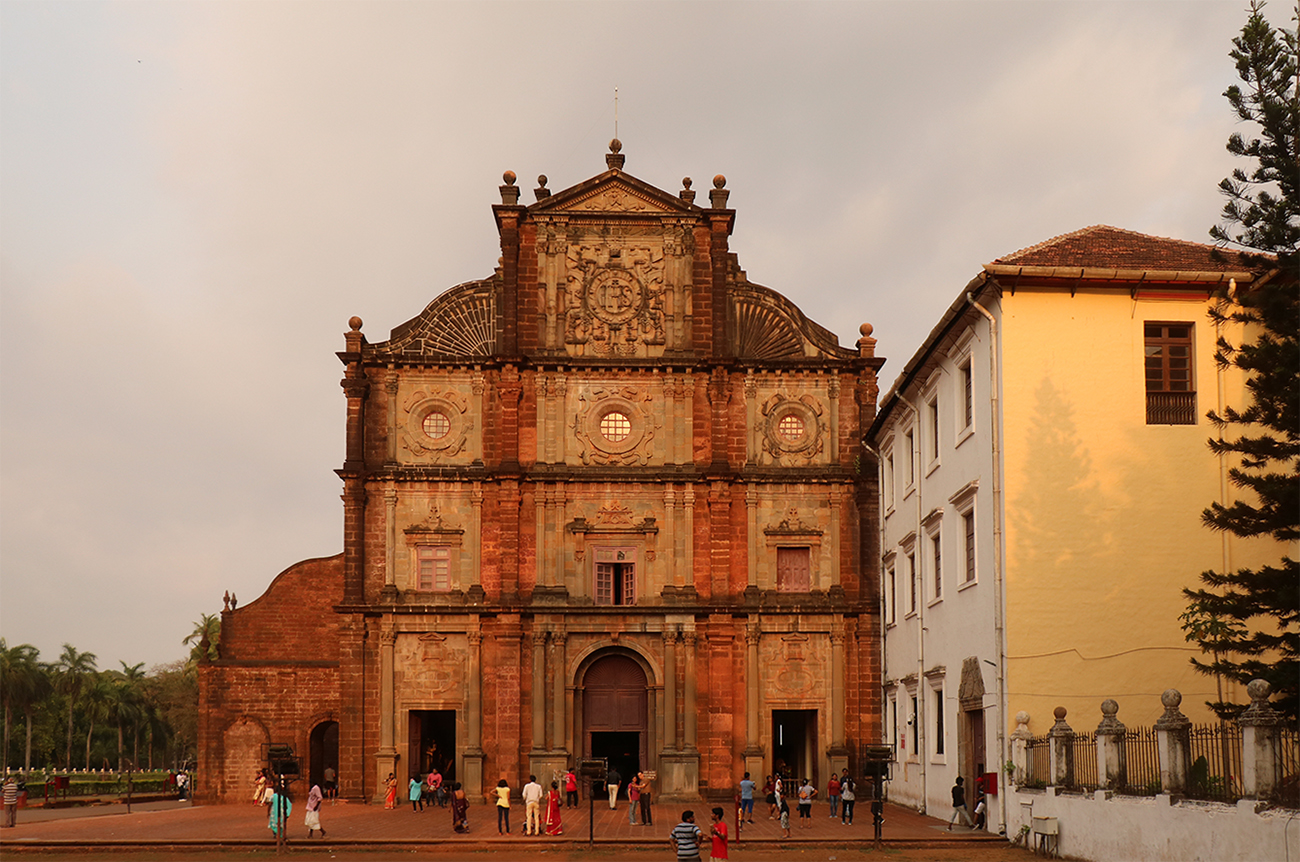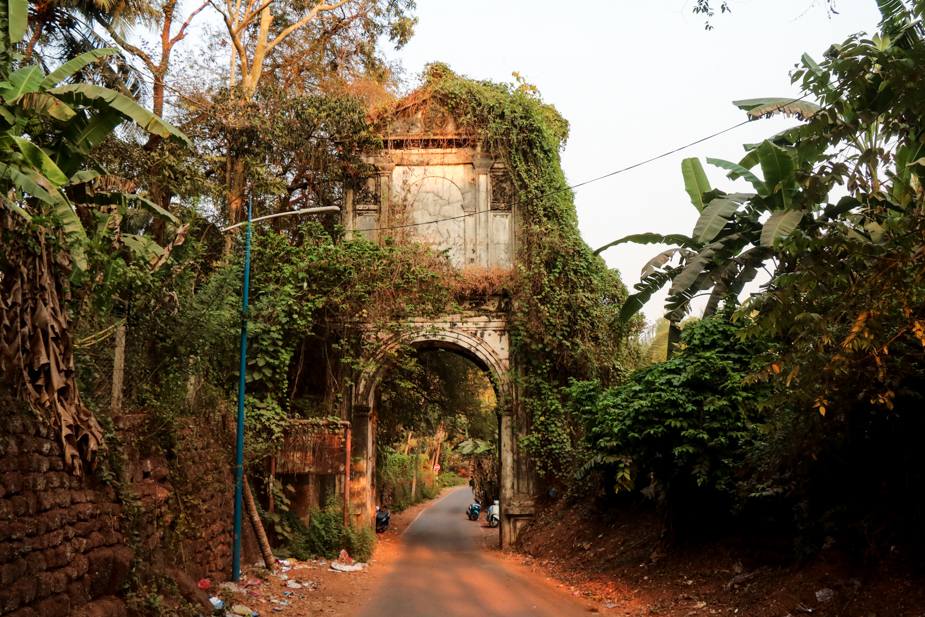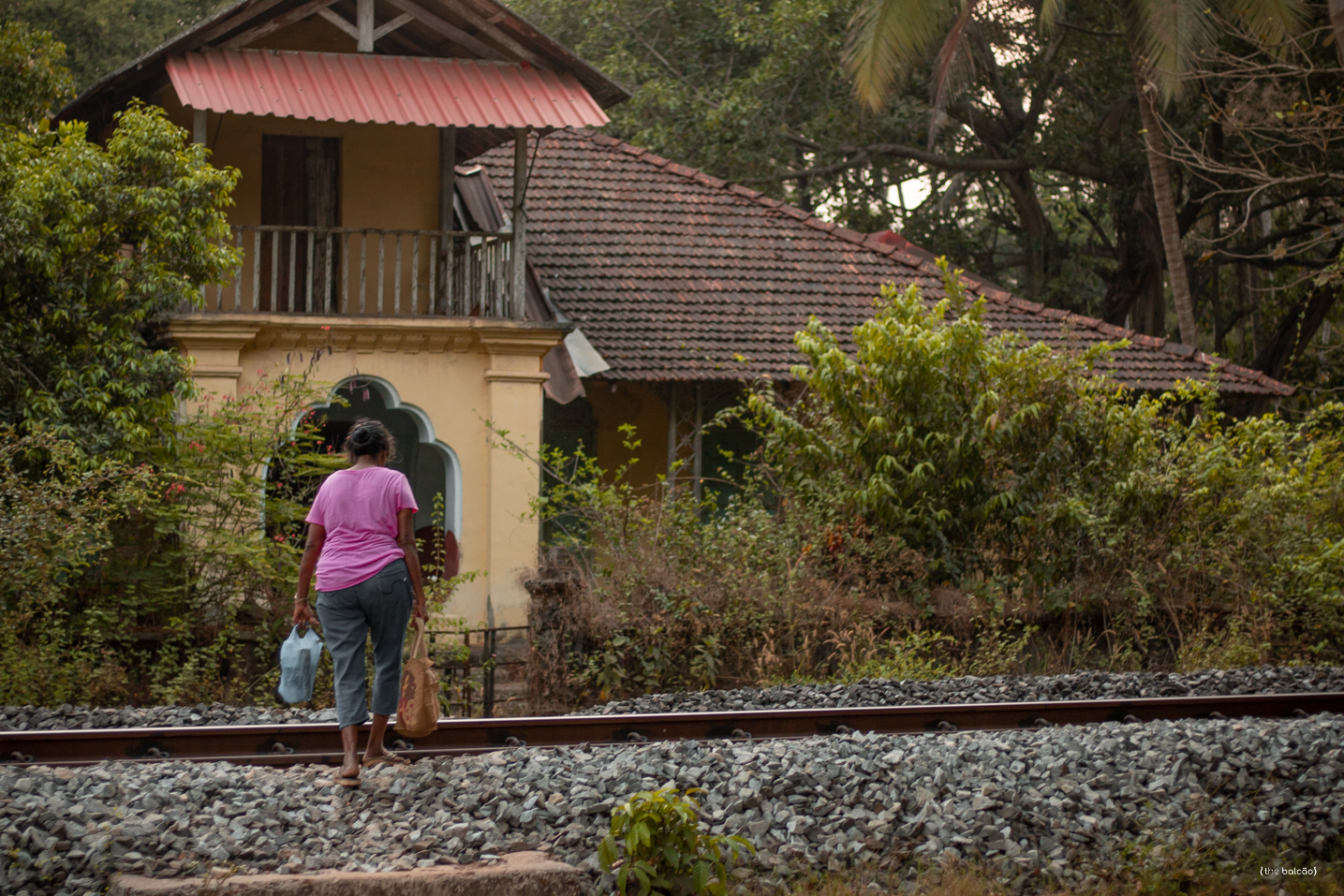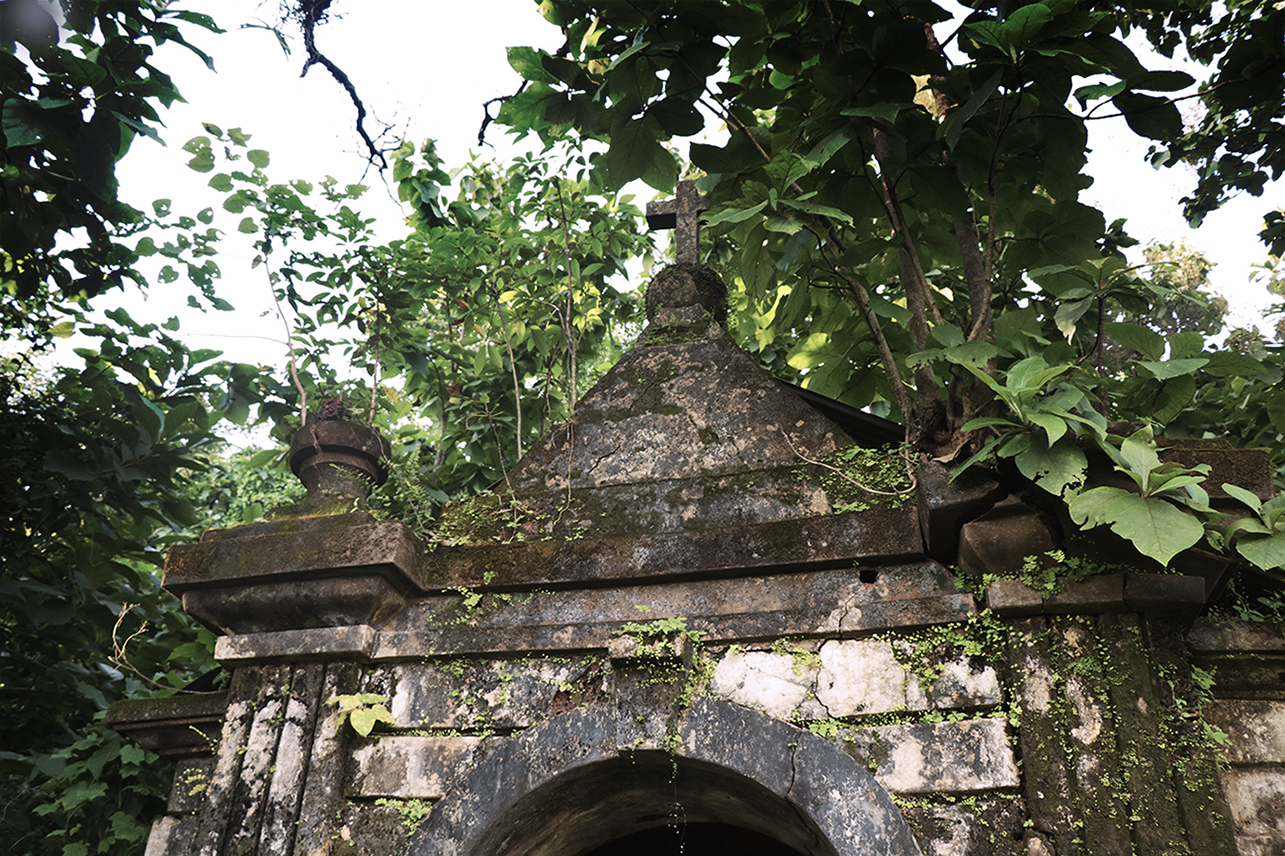The case for the Basilica
In the early 1950s, a series of interventions were carried out to revitalize Old Goa, the former capital of the Portuguese Estado India, spearheaded by Architect Baltazar de Castro. Out of these, one particular work of ‘restoration’ was executed which would have a wave of repercussions for generations to come: The plaster of the Bom Jesus Basilica was stripped off, exposing its laterite stone masonry and thus increasing its antiquity. More than 60 years later, the Basilica has surprisingly withstood the onslaught of rain and weather conditions to become one of the most visited monuments in the whole of India, and probably the world. But whoever looks closely will see the signs of distress the monument is showing, which leads to an ever burning debate: Should the Basilica be plastered or not?
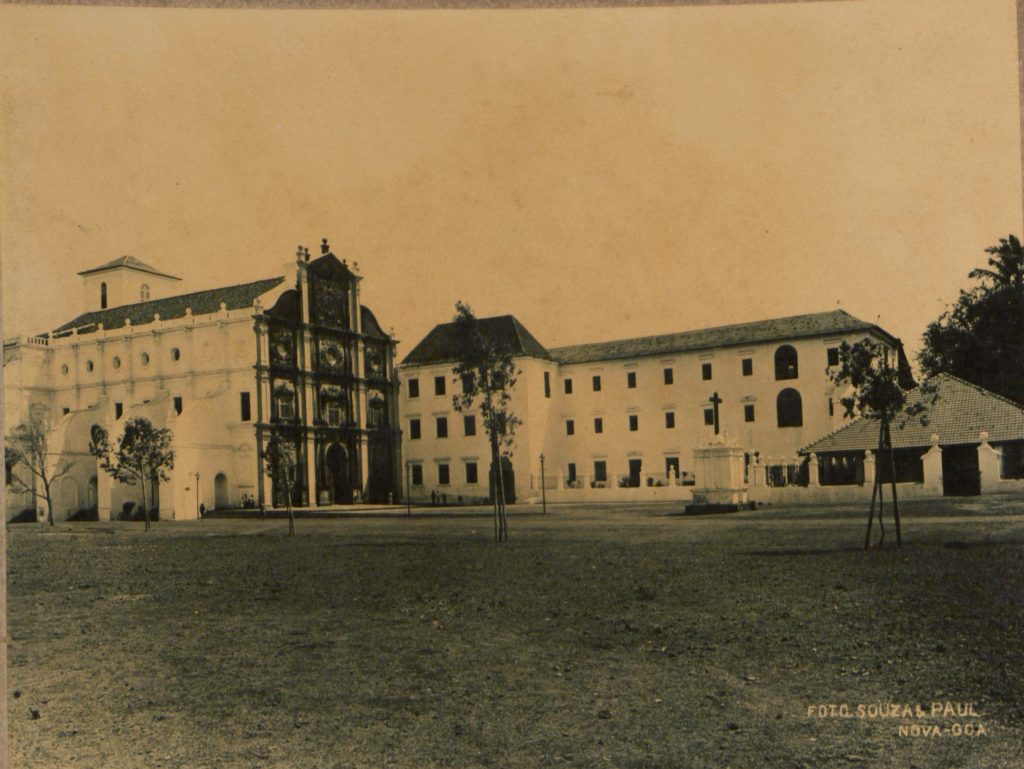
The Bom Jesus Basilica, construction of which began in 1594, is a truly unique piece of architecture. Apart from its profuse Baroque details, it is most renowned for housing the incorrupt body of St. Francis Xavier, or Goencho Saib as he is known locally. It’s tough to think of an image of Goa more synonymous than the Basilica in Old Goa which garners 1 lakh visitors on a ‘bad day’. The fact that it overshadows the mighty Se Cathedral standing opposite it is no small feat. Motifs of the Basilica are strewn all over souvenir magnets, bottle openers and keychains as people want to take home a piece of Goa with them. The exposed laterite façade of the Bom Jesus Basilica has thus become one of the most discernable images of Goa, making it all the more sensitive a subject to be discussed.
Why was the plaster stripped off initially though? As architect scholar Joaquim R. Santos explains in his research paper ‘Reinstalling the Old City of Goa as an eternal light of Portuguese spirituality’, the stripping off of the plaster can most likely be attributed to Ar. Baltazar de Castro, a Portuguese architect with bags of experience in dealing with heritage monuments in Portugal. The motive behind the changes were to highlight the ‘oldness’ of the churches of Old Goa in lieu of an imminent attack from a newly independent India looking to regain territories they deemed to be under foreign rule. By showing that the monuments of Old Goa were culturally unique and predated even the Mughal architecture in India, the Portuguese Prime Minister Oliveira Salazar tried to justify their position of permanence on the Indian subcontinent on the international stage. The timing also coincided with the exposition of the sacred relics of St. Francis Xavier and the 4th centenary of his death anniversary, a time when increased focus would be laid on the Basilica.
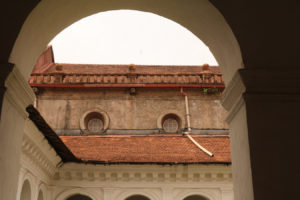
The breaking of the plaster can also be attributed to a poor understanding on part of Ar. Castro about the nature of laterite stone in response to Goan climatic conditions. As Goan architect Vishwesh Kandolkar explains in ‘Bom Jesus Basilica: A symbol of Goan identity’ laterite, being a porous stone absorbs water through capillary action, thus making the walls susceptible to being entirely soaked. In the same manner, Ar. Castro had remodeled the Viceroys Arch in Old Goa, removing the plaster and altering it to give prominence to the exposed laterite masonry. Unfortunately for Castro, the interventions carried out in the Viceroys arch failed as exposed laterite weakened the structure to the extent that the main arch collapsed and had to be reconstructed.
As Castro had a lot of exposure to the conservation scenario in Europe, he may have had an inclination for an exposed stone façade as it gave rise to feelings of nostalgia and romanticism. Since there was an absence of any sort of strict conservation guidelines in Goa at the time, there would have been little opposition to Castros interventions. However, the first recorded and notable backlash against the intervention in the basilica came in the form of another architect, Luis Benavente, a relatively younger yet massively experienced practitioner in the field of heritage conservation. Joaquim Santos explains that he hit out at Ar. Castro sending a detailed report to Lisbon on the importance of plastering the laterite stone as was done through the centuries in response to the climatic conditions of Goa, especially the monsoons. He also wasn’t convinced by its aesthetics and seemed to prefer the plastered look, probably stemming down from his conscience as a conservation architect.
Today, a closer look at the facades of the Basilica shows a strong cause to be concerned. The Southern and Eastern facades are most affected as can be seen in the deterioration of the cornices, mouldings and a loss of detail in the carvings. A string of palms once existed in the oval strip which shielded the South Eastern façade from the elements seem to have been removed in recent years, thus making it even more vulnerable to climatic conditions. In some cases, weak laterite stones have been replaced with newer ones, thus compromising the authenticity of the monument. Leakage problems continue to wreak havoc in the bellfry.
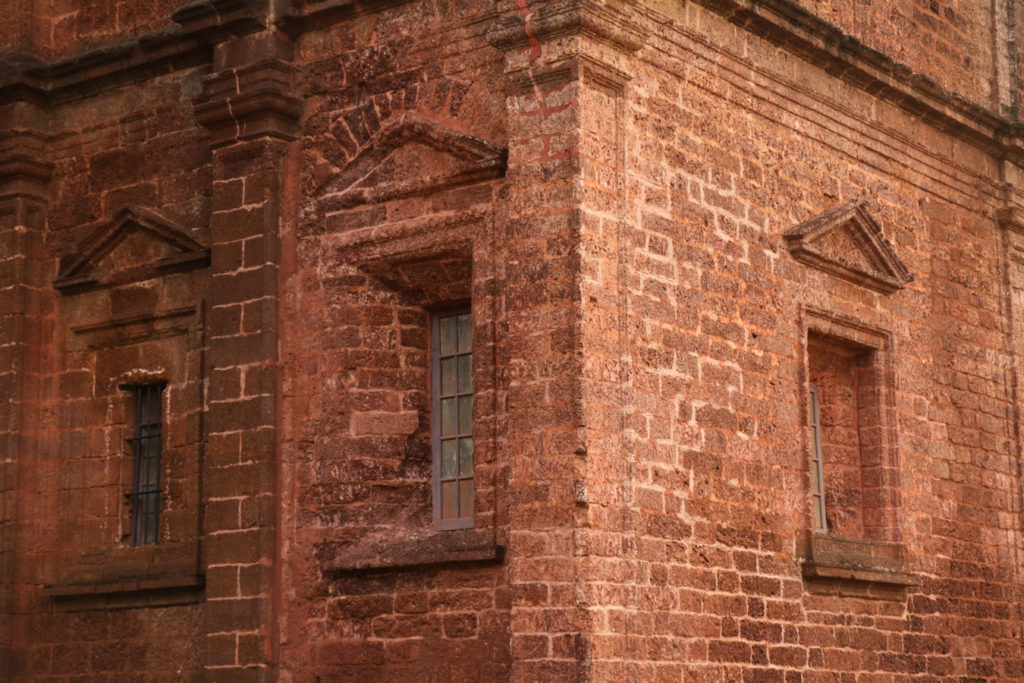
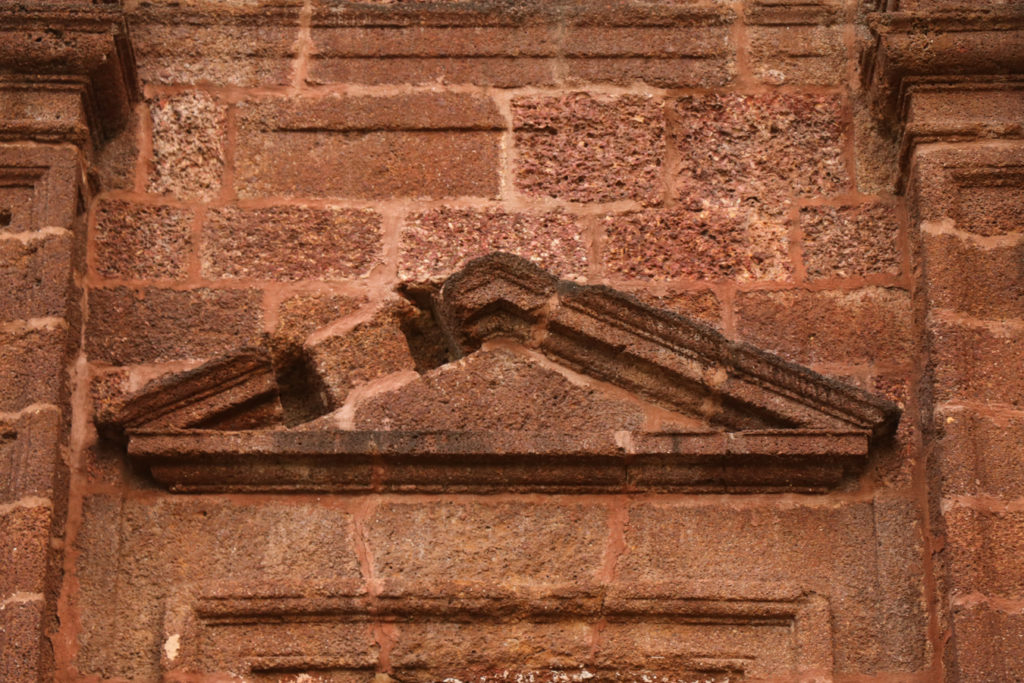
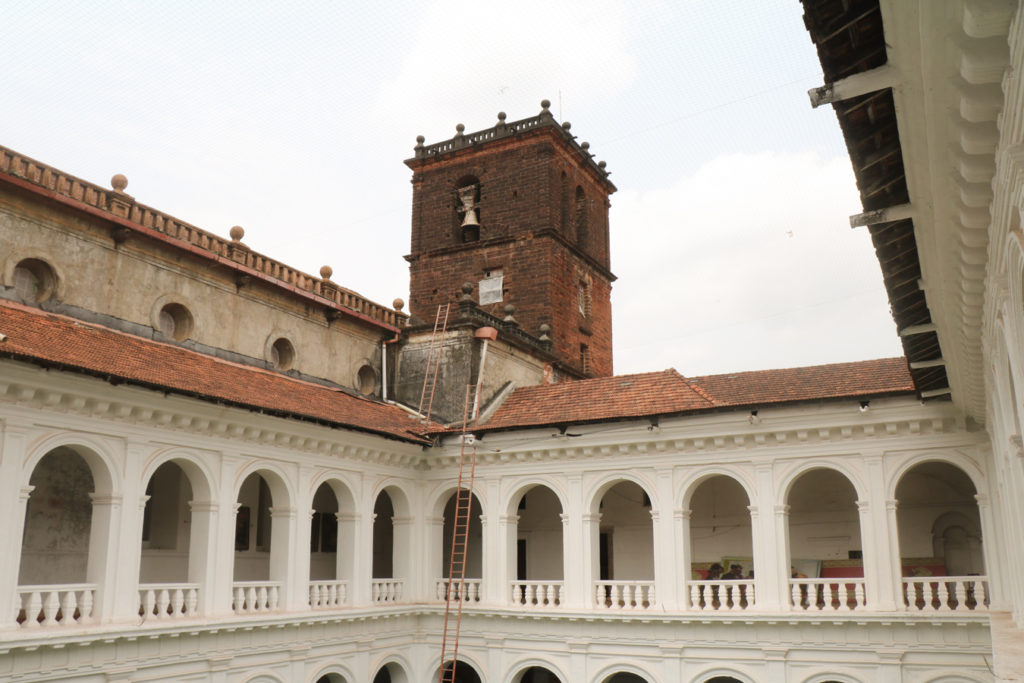
Like many Goans who have grown up seeing the ‘red bricked church’ Bom Jesus Basilica rector Father Savio Baretto acknowledges the deteriorating state of the basilica but believes the replastering ‘will hurt the sentiments of Goan people’ and says ‘there must be more modern ways of preserving and improving the structure’. (The Goan article) However, these sentiments are misplaced since the Basilica was almost always plastered.
To give a very simple answer to the burning question, Yes, the basilica should be plastered. Whitewashing the Church with lime in the traditional way is what is best for the basilica. Modern methods like a ‘laterite pack’ which are being suggested by the ASI are an option, but doubts remain over its effectiveness and authenticity. The basilica should be plastered as it always was.
References:
Santos, J. R. (2016). ‘Reinstalling the Old City of Goa as an Eternal Light of Portuguese Spirituality’: The Plan for the Reintegration of Old Goa at the End of the Colonial Period . Architectural Histories , 4 ( 1 ) , 9 . DOI: http://doi.org/10.5334/ah.58
Kandolkar, V. (2016). Bom Jesus Basilica : A symbol of Goan identity. Retrieved from Sahapedia: https://www.sahapedia.org/the-basilica-of-bom-jesus-symbol-of-goan-identity
The Goan (Feb 2016) Plastering Basilica; Church says: Oh God, please dont http://englishnews.thegoan.net/story.php?id=11003

